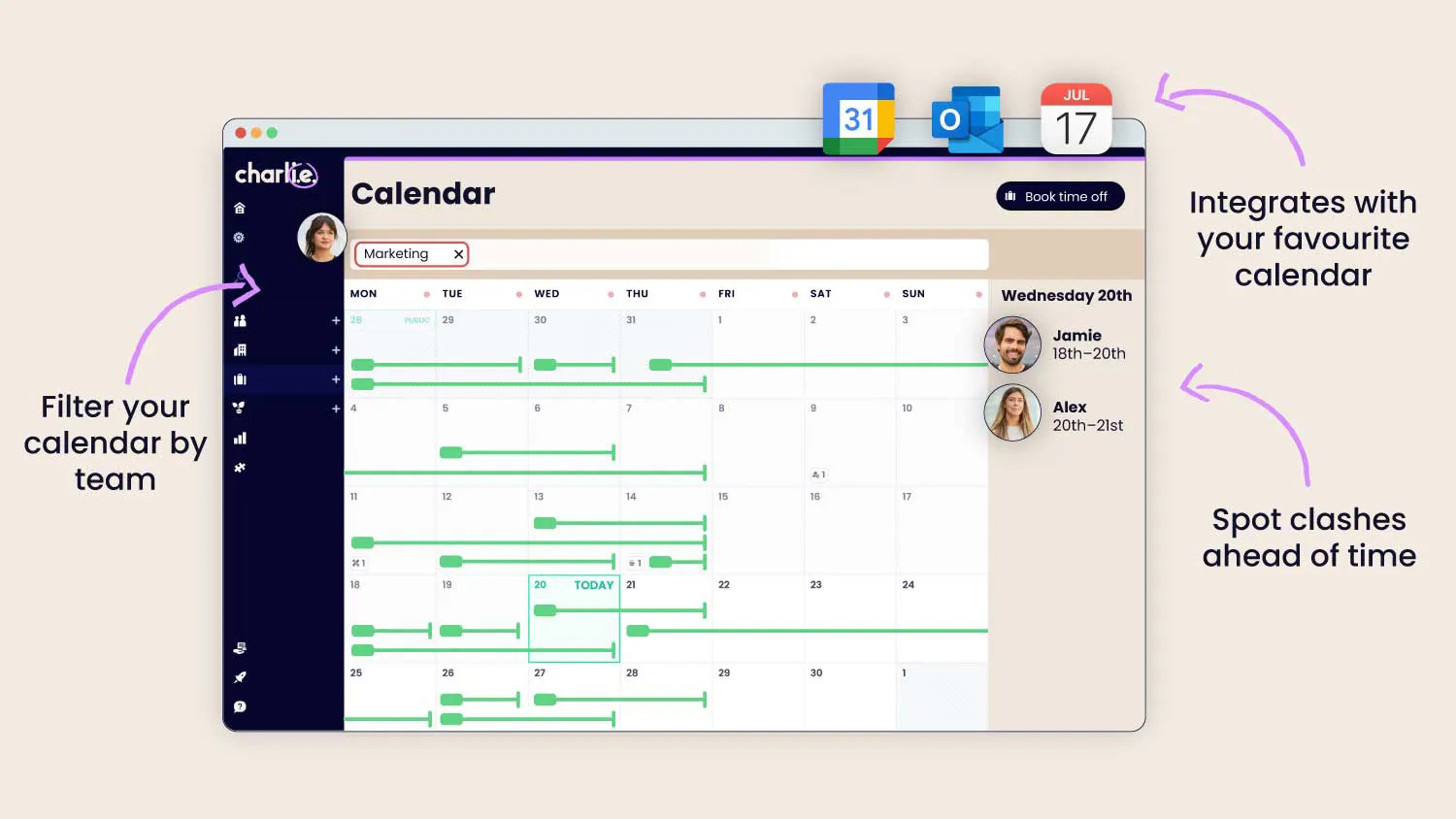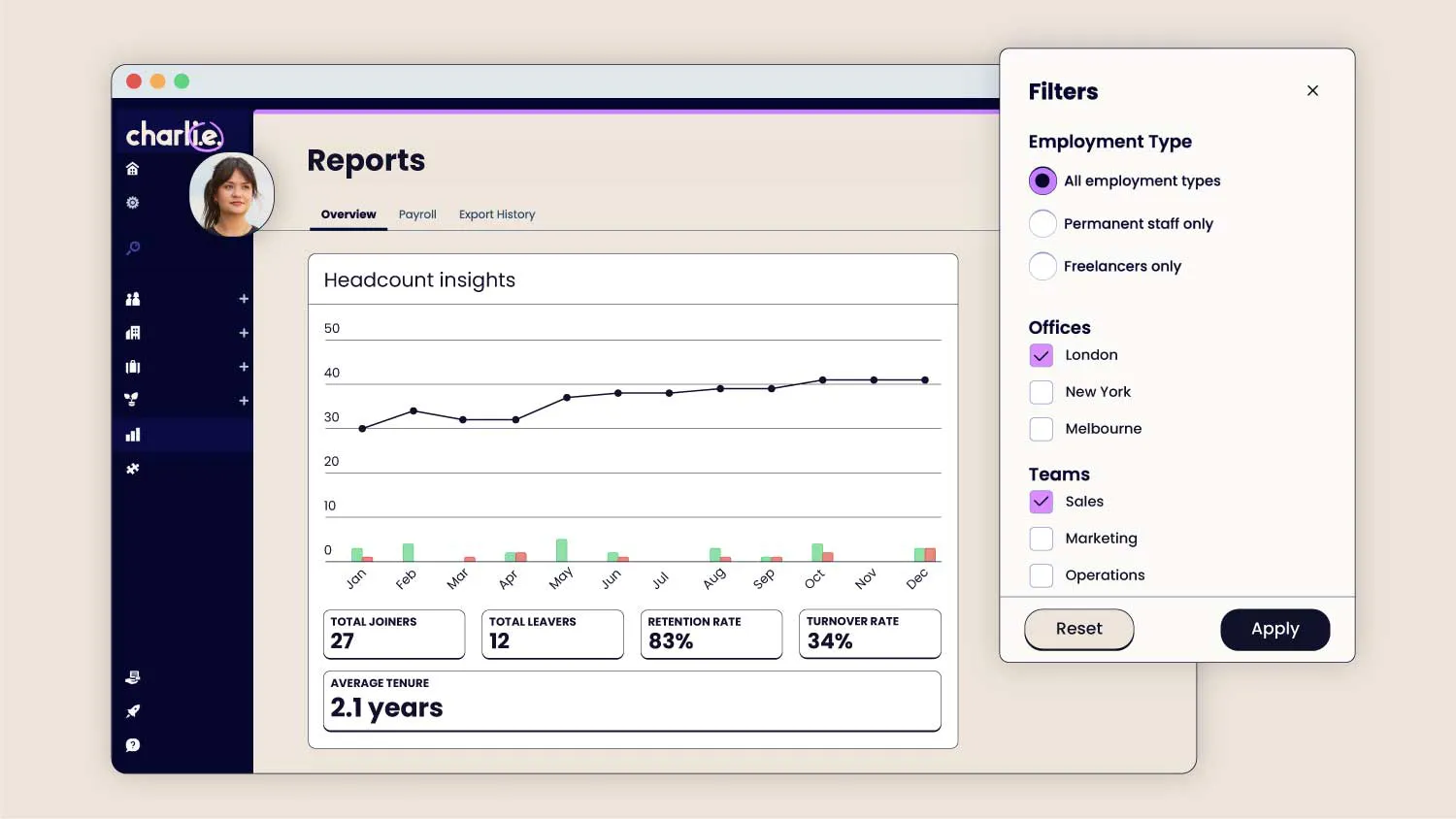What is the average number of sick days in the UK?

The average sick days an employee takes in the UK has fluctuated over the years.
That’s an important point for HR teams to know. Knowing the average number of sick days can help you and the rest of your HR team make informed decisions about your sick leave policy.
I help ensure the smooth running of HR processes at Charlie. As such, I monitor our employee metrics and communicate them to the leadership team.
I’d like to draw on that experience and look at what it means for your business if your average number of sick days is increasing or decreasing.
What is the average number of sick days in the UK?
The UK sickness absence rate rose to 2.6% in 2022. That means an average of 5.7 sick days per employee over the course of a year.
As you look further back, you see those numbers ebb and fluctuate. Not surprisingly, the COVID-19 pandemic disrupted the patterns of workplace absence. Knowing those figures is an indication of a workplaces' health.
For that reason, marking those metrics is a benchmark of your organisation’s health against the national average. That, in turn, can help you create effective health policies and strategies.
Why is knowing your average number of sick days important?
Knowing the average number of sick days at your company can be an important barometer for your HR team.
Are your team members taking more or fewer sick days than the national average? It might be time to investigate the possible causes if it's more.
Are they lower? That can be a sign that your health and wellness initiatives are working.
These insights drive change, inform policy, and help you create a healthier and happier workplace. Knowing your average number of sick days is knowing the “why” and the “what” goes into an engaged and productive team.
How to measure the average number of sick days at your company
Calculating the number of sick days at your company is fortunately pretty straightforward. The formula is:
Average Sick Days= Number of Employees / Total Sick Days Taken
That gives you a clear metric to work with. It’s a starting point for a deeper analysis of your organisation’s health trends.
Manually tracking sick days using spreadsheets is how most small businesses manage their sick days.
This method is cumbersome, time-consuming, and prone to human error. You can’t show the results of your health initiatives to your stakeholders. You can’t make important business decisions regarding health and wellness because of a lack of data.
A much better way to do this is to have an HR software automate sick day tracking for you. The Charlie platform lets employees track sick days with a single click, and sends immediate notifications to you and any of their managers every time someone books a sick day.

Using the Charlie platform, you can track metrics like:
- Time off taken
- Holiday taken
- Sick days taken
- Average sick days taken
Charlie makes it simple to track all of these metrics, so you can make informed and data-driven decisions about how you run your business.

What are the legal aspects of sick days in the UK?
There is no upper limit on the number of sick days an employee can take in the UK.
That said, there are certain procedures to consider and documentation to make. Employees are required to provide a fit note from a physician if they are out sick for more than seven days.
How many sick days are acceptable before you consider taking disciplinary action?
Sick leave policies are easy to take advantage of, if you don't have a transparent process to manage them.
The number of sick days an employee can take off before they face consequences is contingent on your company policy and can vary between policies.
That’s why having a sick leave policy is important. It should define boundaries and rules around the number of sick days employees can have. It’s not just about punishment for bad behaviour, it’s about starting a conversation about employee health and wellbeing.
We put together a guide on how many sick days is too many if you'd like more information on how to handle the problem.
Managing long-term sickness
One employee having a cough or the sniffles for a day or two is not a big deal. What happens though, when an employee is dealing with something serious and has to take a longer leave of absence?
Usually, an employee is considered going on long-term sick leave if they have an absence of four weeks or more.
Your sick leave policy should include steps for dealing with long-term sickness. The policies should include steps for having absence review meetings to understand the employee’s situation, and how to support their eventual return to work.
For those employees with disabilities, your policy should have room for reasonable accommodations as required by law, to support their health and enable them to do their best work.
Keep your team’s sick days in track with Charlie
HR teams are usually the ones saddled with the unenviable task of managing their company’s time off.
Doing it the old-fashioned way, with spreadsheets, isn’t just time-intensive, but it’s also prone to errors.
A lack of reporting can leave you without the insights you need to make key business decisions about your business, especially when it comes to health and wellness.
The Charlie platform helps you here with its time off and reporting features.
You’ll receive immediate notifications whenever an employee takes a sick day. The system will manage the sick leave calculations for you, and make automatic distinctions between non-deductible sick days and annual leave.
To try it for yourself, start a free trial of Charlie today.



